Beautiful, glowing skin not only boosts our confidence but also reflects good overall health. However, achieving a radiant complexion takes effort, care, and consistency. This article will explore research-backed strategies that may help you maintain healthy, glowing skin. From the basics of a daily skincare routine to the importance of using sun protection, we’ll explore essential tips and habits that cater to different skin types.
We will provide you with actionable advice on how to potentially achieve and maintain healthy, glowing skin, discussing the role of nutrition, stress management, and skincare regimens. Lastly, we will answer some frequently asked questions regarding the same.
Before diving into specific tips for achieving healthy skin, it’s essential to understand the importance of a consistent skincare routine and identify your unique skin type. These two factors will set the foundation for choosing the right products and practices tailored to your skin’s specific requirements.
A consistent and well-rounded skincare routine is crucial for keeping your skin clean, clear, and protected. The three fundamental steps in a daily skincare routine are cleansing, toning, and moisturising.
Remember, a well-balanced skincare routine may help promote healthy skin function and combat common skin issues like acne, dryness, and signs of ageing.
Understanding your skin type is vital for selecting appropriate skincare products tailored to your skin’s specific requirements. There are five primary skin types:
Knowing your skin type allows you to customise your skincare routine to address specific concerns and maintain a healthy, balanced complexion.
Now that we’ve covered the basics, it’s time to delve into more targeted tips and strategies for maintaining a healthy skin. These are described below.

Protecting your skin from the harm caused by the sun is very important3.Too much sun can lead to early ageing, sunburn, and even skin cancer.
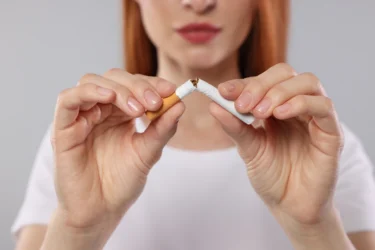
Smoking has a detrimental effect on skin health, causing premature ageing, wrinkles, and an increased risk of skin cancer.

Establishing a consistent and suitable skincare routine tailored to your skin type is instrumental in promoting healthy skin.

A well-balanced, nutrient-rich diet plays a significant role in maintaining healthy skin. Proper hydration and a diet rich in antioxidants, proteins, and healthy fats may improve skin quality and appearance.
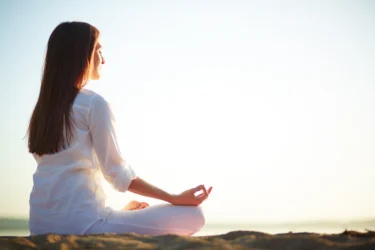
Stress has a significant impact on skin health, exacerbating existing skin conditions and causing skin sensitivity and breakouts9. Increased stress levels can trigger hormone imbalances, leading to increased oil production, inflammation, and impaired skin barrier function. Below, we have described ways in which you may try to reduce stress.
Relaxation techniques
Incorporate stress reduction techniques into your daily routine, such as meditation, mindfulness, yoga, or deep breathing exercises.
Also Read: Amazing Benefits of Moringa for Your Skin!
Now that you’re equipped with essential skin health strategies, let’s explore some advanced skincare tips that may help you truly optimise your skin’s appearance and health.
Once you’ve identified your skin type from the five primary skin types mentioned earlier, you can customise your skincare routine. Choose products specifically formulated for your skin’s unique requirements. This may include targeted management options, specific moisturisers, or serums catering to your skin’s concerns.
Considering the vast array of skincare products available, it’s essential to know which ingredients are most beneficial for your skin type and concerns.
In addition to your skincare routine, adopt healthy lifestyle habits that possibly promote optimal skin health.
Also Read: 8 Beauty Benefits of Using Ice Cubes On The Skin
Everyone’s skin is unique, and special skin requirements may arise depending on factors such as age, skin condition, and even personal preferences. Here are some helpful tips to address these specific concerns.
With age comes the challenge of combating fine lines, wrinkles, and the loss of firmness. Use products containing ingredients like retinol and vitamin C that are said to boost collagen production and reduce the appearance of wrinkles12. Also, ensure consistent sun protection.
For individuals who frequently experience acne breakouts, choose non-comedogenic products (products that do not block pores). Use targeted therapy, such as salicylic acid or benzoyl peroxide, to combat acne-causing bacteria13.
Those with sensitive skin should opt for gentle, fragrance-free products that do not cause irritation or redness. Stick with a minimalistic skincare routine and do a patch test for new products before using them.
Darker skin tones can be more prone to hyperpigmentation and require a diligent sun protection routine. Choose broad-spectrum sunscreen with SPF 30 or higher, along with skincare products that help address uneven skin tone or dark spots.
Lighter skin tones are often more sensitive to sun exposure and prone to sunburn. Prioritise maintaining an effective sun protection routine with broad-spectrum sunscreen with SPF 30+ and minimise sun exposure during peak hours.
Also Read: Natural Home Remedies for Oily Skin
Achieving and maintaining healthy, glowing skin requires diligence, care, and consistency. By understanding the fundamental principles of skincare, knowing your skin type, and implementing a personalised skincare routine, you may improve your complexion and maintain its health for years to come.
Additionally, don’t underestimate the importance of a balanced diet, proper hydration, adequate sleep, stress management, and regular exercise as a part of a healthy lifestyle. When combined with your daily skincare regimen, these habits can help you achieve healthy and radiant skin.
Also Read: Natural Home Remedies for Hyperpigmentation
By consistently performing a gentle skincare routine, protecting your skin from the sun, maintaining a balanced diet, and practicing healthy lifestyle habits like exercise and proper sleep, you may achieve a healthy, glowing complexion.
To make your skin look healthier, be gentle when cleansing your skin, exfoliate once or twice a week, moisturise daily, and always apply sun protection when exposed to sunlight.
hile “perfect” skin may remain an unattainable standard, natural approaches to maintaining healthy skin include consuming nutrient-dense fruits and vegetables, staying hydrated, getting sufficient sleep, managing stress, exercising regularly, and practicing sun-safe habits.
To keep moisture in your skin, drink plenty of water, use lukewarm water while washing and bathing, apply a moisturiser suitable for your skin type, and utilise a humidifier to maintain indoor air humidity levels.
Yes, UV rays can penetrate the clouds, so using sunscreen daily is essential for preventing skin damage.
Disclaimer: The information provided here is for educational/awareness purposes only and is not intended to be a substitute for medical treatment by a healthcare professional and should not be relied upon to diagnose or treat any medical condition. The reader should consult a registered medical practitioner to determine the appropriateness of the information and before consuming any medication. PharmEasy does not provide any guarantee or warranty (express or implied) regarding the accuracy, adequacy, completeness, legality, reliability or usefulness of the information; and disclaims any liability arising thereof.
Links and product recommendations in the information provided here are advertisements of third-party products available on the website. PharmEasy does not make any representation on the accuracy or suitability of such products/services. Advertisements do not influence the editorial decisions or content. The information in this blog is subject to change without notice. The authors and administrators reserve the right to modify, add, or remove content without notification. It is your responsibility to review this disclaimer regularly for any changes.
Millions across the globe suffer from diabetes. This health issue calls for a life change, mainly in the diet. A large proprotion of packaged drinks available in the market are either full of sugar or contain artificial sweeteners which may be harmful for health. The hunt for natural drink swaps aiding blood sugar control is thus continual and coconut water seems to be a standout1.
This blog aims to shed light on the potential health benefits of coconut water and its role in diabetes. We will dive into its nutrient profile, its effect on blood sugar, and how to safely add it to your diet.
Coconut water is a health-packed drink from the core of young, green coconuts. This section explains what makes it special, its nutrient content, and why it’s good for you11.
A cup (240 ml) of raw coconut water gives you:
Sweetened versions have more sugar. So, plain coconut water is a better pick1.
Our bodies need vital minerals called electrolytes. They keep our body fluids balanced. Coconut water is rich in them, providing a good part of your daily needs in just one cup8.
Coconut water can help you manage weight while staying hydrated. Plus, it adds a sweet twist to your water intake1.
Nature has packed coconut water with antioxidants. These substances fight harmful free radicals, which makes it a good choice to drink4.
Diabetes is a condition that leads to high blood sugar levels in the blood due to insulin-related issues. There are two key types of the disease:
Signs of diabetes can be unquenchable thirst, passing urine often, sudden weight loss, tiredness, and blurry vision. Managing health and lifestyle changes are key in handling diabetes.
We’ll explore in this section how does coconut water falls into diabetes control, looking at how it can be a good addition to a diabetes-friendly meal plan10.
Consumed wisely, coconut water is said to be helpful for diabetics. This section dives into some likely plus points.
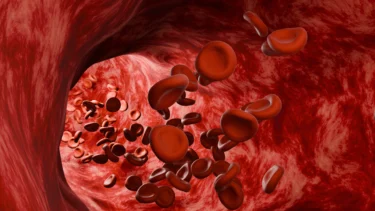
Diabetes often worsens blood flow. Having coconut water may help in widening blood vessels, helping better circulation2. But further research is needed to prove this.

Coconut water makes weight management easier. It’s a low-calorie drink packed with nutrients. This can help keep weight in check and health on track1.
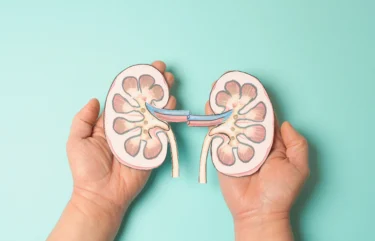
Regular coconut water consumption might be good for kidney health . Research hints that it lowers kidney damage caused by diabetes, although more long-term studies are needed to prove this3.
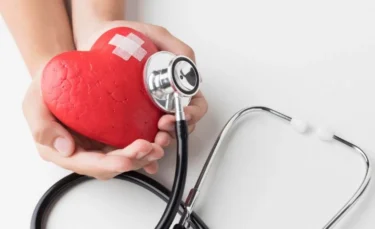
Coconut water can prove to be a heart-friendly choice. It’s rich in nutrients like potassium9 and magnesium which are good for heart5,7. More research is required to confirm this benefit.
As coconut water has natural sugars, people with diabetes might be concerned. Drawing a line between natural and added sugars can bring clarity.
The sugar found in whole foods is natural. Added sugar is what food processors add to food items and drinks. In coconut water, the sugar is natural. That’s ok if you don’t overconsume it1.
Put next to other drinks, coconut water seems much better. It boasts less carbohydrates and sugar than most sugary drinks, potentially making it a safer pick1.
While coconut water may offer perks for diabetics, they must tread carefully. Below are a few things to remember before adding it to your routine.
Knowing when and how to have coconut water can help you get the most out of it. Let’s look at some strategies:
When consumed wisely, coconut water may have potential perks for diabetics. Its nutrient-rich, low calorie, and electrolyte-packed profile makes it a worthy swap for sugary drinks. As always, talk to your doctor before you introduce anything new to diet, keep a check on blood sugar levels, and eat balanced meals for the best diabetes control.
Also Read: Diabetes: The Silent Killer Sweeping Across India
Stick to 8 ounces or less of raw coconut water daily. However, it’s advisable to discuss with your healthcare provider first if you have diabetes.
People with high potassium levels, kidney problems or those taking antibiotics should always check with a healthcare professional before having coconut water.
While raw coconut water has natural sugars, it still trumps most sugary drinks. Always choose plain and unsweetened varieties to cut down on sugar intake.
For diabetics, plain coconut water, herbal teas, and water infused with fresh fruit or cucumber slices are smart picks. But if are a diabetic, its best to discuss with your doctor before you introduce anything new to diet.
Plain, unsweetened coconut water wins over other types. Always read labels and aim for pure, natural options.
Disclaimer: The information provided here is for educational/awareness purposes only and is not intended to be a substitute for medical treatment by a healthcare professional and should not be relied upon to diagnose or treat any medical condition. The reader should consult a registered medical practitioner to determine the appropriateness of the information and before consuming any medication. PharmEasy does not provide any guarantee or warranty (express or implied) regarding the accuracy, adequacy, completeness, legality, reliability or usefulness of the information; and disclaims any liability arising thereof.
Links and product recommendations in the informationprovided here are advertisements of third-party products available on the website. PharmEasy does not make any representation on the accuracy or suitability of such products/services. Advertisements do not influence the editorial decisions or content. The information in this blog is subject to change without notice. The authors and administrators reserve the right to modify, add, or remove content without notification. It is your responsibility to review this disclaimer regularly for any changes.
Creatinine is a metabolic waste product naturally produced in the body and is commonly used as an indicator of muscle function. Understanding creatinine and the factors that may lead to low levels is important for maintaining overall health1.
The body uses creatine as a source of energy, particularly within skeletal muscles2. Creatinine is the waste product formed when creatine is broken down during this process1,3.
Our skeletal muscles create creatinine after metabolising creatine phosphate. The primary function of creatinine is to be filtered out from the blood by the kidneys, after which it is excreted from the body in the urine. This process helps to maintain a consistent level of creatinine in the blood4.
Several factors influence the level of creatinine in the blood. These include, age, gender, muscle mass, and ethnic background4. The common range for adult men is 0.74 to 1.3 mg/dL and for adult women, 0.4 to 1.0 mg/dL5. These values may change from person to person, depending on the laboratory conducting the test and the individual’s body composition.
A variety of factors may contribute to low creatinine levels. These can include reduced muscle mass, liver conditions, dietary factors, certain medical conditions, and pregnancy.
Reduced skeletal muscle mass may lead to lower creatinine levels, as creatinine is a by-product of the breakdown of skeletal muscle tissue.
Liver conditions, such as liver disease or liver failure, may affect the production of creatine. This can subsequently lead to reduced creatinine levels6.
Diet can also influence creatinine levels. A diet low in protein, as well as vegetarian or vegan diets, may be associated with lower creatinine levels.
Pregnant women may experience lower creatinine levels during pregnancy. This occurs due to an increased blood flow to the kidneys and typically returns to normal after childbirth8.
Certain medical conditions may also cause low creatinine levels. These include muscular dystrophy, hyperthyroidism, and anaemia2.
Several factors may contribute to lower creatinine levels, which can cause your estimated glomerular filtration rate (eGFR) to appear higher than it truly is. These factors include following a vegetarian or vegan diet, having low muscle mass, pregnancy, a history of muscular atrophy or amputation, and severe liver cirrhosis. It is essential to consult your healthcare provider if you have any questions about interpreting your eGFR or serum creatinine results1.
Dr. Rajeev Singh, BAMS
The symptoms and signs vary depending on the underlying cause of the low creatinine level.
Symptoms of low creatinine levels can be difficult to identify and may include9:
It is essential to undergo a comprehensive medical evaluation. Discuss any symptoms you are experiencing with your healthcare provider, who will review your full medical history and arrange any necessary laboratory tests.
Studies3 suggest that since the liver produces creatine, decreased liver function may result in a decrease in the body’s production of creatinine. Overall liver functioning can be affected by liver disease and liver failure caused by various medical conditions.
Dr. Siddharth Gupta, B.A.M.S, M.D (Ayu)
Low creatinine levels can be detected through blood and urine tests, a physical examination, and a thorough review of your medical history. These assessments will be conducted by your healthcare provider.
Your healthcare provider will also review your medical history, including any chronic conditions, medication use, and family history of kidney disease. Alongside a physical examination, this helps to determine the possible causes of low creatinine levels.
Your healthcare provider may recommend blood and urine tests to assess how well your kidneys are functioning.
Your healthcare provider will recommend appropriate treatment options if a cause for your low creatinine levels is identified. Managing this condition may involve addressing underlying health issues, modifying medications, and making lifestyle adjustments.
The management of low creatinine levels depends on the underlying cause.
Modifying your daily habits may help to improve your creatinine levels.
Cigarette smoking has several negative effects on the body, including a significantly increased risk of chronic kidney disease. Research suggests that quitting smoking may help reduce the risk of kidney-related issues, which could otherwise contribute to fluctuations in creatinine levels16.
Dr. Smita Barode, B.A.M.S, M.S.
To help prevent low creatinine levels, you may consider adopting the following measures:
Ensuring a balanced diet, one that includes a variety of protein sources and an appropriate intake of calories may help support healthy creatinine levels2.
Making sure that you eat a balanced diet, including using different sources of proteins and taking in the right amount of calories, may help keep normal creatinine levels14.
Maintaining proper hydration supports kidney function, which in turn may help to keep creatinine levels within the normal range15.
Engaging in regular physical activity and exercises that support the maintenance or development of muscle mass may help in sustaining normal creatinine levels12.
Low creatinine levels can arise from various underlying causes and may pose certain health risks. The implications largely depend on the specific reason behind the decrease. Early identification of the cause significantly improves the chances of effectively managing the condition and maintaining healthy creatinine levels.
Low creatinine levels result from various factors, including reduced muscle mass, liver conditions, dietary habits, and pregnancy. Symptoms can differ depending on the underlying cause. Diagnosis typically involves blood and urine tests, along with a thorough review of the individual’s overall health. By identifying the root cause, healthcare professionals can develop personalised management plans tailored to the patient’s specific needs.
Low creatinine levels may indicate muscle loss, liver problems, poor nutrition, or increased elimination during pregnancy. Proper management begins with identifying the underlying cause.
Low creatinine levels may indicate a range of health issues, from milder concerns such as inadequate nutrition to more serious conditions like liver disease or muscle disorders. It is important to consult a healthcare provider if you have concerns about your creatinine levels.
To naturally increase creatinine levels, you may consider incorporating more protein into your diet, engaging in regular exercise to maintain or build muscle mass, and ensuring adequate hydration.
Yes, older adults, individuals with muscle disorders, those experiencing liver problems, people with inadequate nutrition, and expectant mothers may be at a higher risk of low creatinine levels.
If you notice that your creatinine levels frequently exceed the normal range, or if you experience symptoms associated with low creatinine levels, such as muscle weakness or persistent fatigue, it is important to consult a healthcare professional. They can conduct a thorough evaluation and recommend appropriate management options.
To support healthy creatinine levels, it is advisable to include protein-rich foods such as meat, fish, and dairy products in your diet, alongside maintaining proper hydration. However, it is important to consult a healthcare professional for personalised guidance and to exclude any underlying medical conditions.
Low creatinine levels can indicate potential kidney issues, muscle loss, or pregnancy. However, context is crucial as it may be normal for pregnant women. Always consult a healthcare professional for accurate interpretation.
Low creatinine levels can indicate reduced muscle mass, malnutrition, or potential kidney dysfunction. It’s essential to consult a healthcare provider for proper evaluation and diagnosis to determine the underlying cause and appropriate management.
Low creatinine levels can sometimes indicate kidney disease, particularly if accompanied by other symptoms like fatigue or swelling. However, it is essential to consult a healthcare provider for proper diagnosis and treatment.
Yes, low creatinine levels are considered normal during pregnancy due to the increase in blood volume and changes in kidney function. However, it’s essential for expecting mothers to consult their healthcare provider for proper monitoring and guidance.
Disclaimer: The information provided here is for educational/awareness purposes only and is not intended to be a substitute for medical treatment by a healthcare professional and should not be relied upon to diagnose or treat any medical condition. The reader should consult a registered medical practitioner to determine the appropriateness of the information and before consuming any medication. PharmEasy does not provide any guarantee or warranty (express or implied) regarding the accuracy, adequacy, completeness, legality, reliability or usefulness of the information; and disclaims any liability arising thereof.
Do you ever have days when your mouth tastes rusty? This strange taste is linked to dysgeusia, a term used to describe altered taste. Metallic taste can be rather worrying, especially if it hangs around. But there’s no need to panic. The metallic taste is usually not a big deal. It’s often due to common factors we’ll explore here.
We’ll look at the reasons why you may have a metallic taste in your mouth and what does metallic taste in mouth means. We’ll also look at common causes of metallic taste in the mouth, its diagnosis procedures, and talk about when you should see a doctor. Alongside this, we’ll share ways in which you may handle this weird taste. Lastly, we’ll answer some common queries regarding a metallic taste in the mouth.
Did you know?
The aim is clear. To investigate what causes a metallic taste in the mouth? Let’s find out the usual suspects behind metallic taste in the mouth11.

Your mouth care routine could be hiding the reason for your metallic taste. Many oral health issues can cause this.

Certain health issues can tamper with your sense of taste. This can result in a metallic flavor in your mouth.

If you’re thinking, why do I have a metallic taste in my mouth while pregnant? Well, hormonal changes might be messing with your taste and smell. It often results in a metallic taste, more so during early pregnancy7.
Dysgeusia, also known as an altered taste in the mouth, often complained of as a metallic taste, happens during the first trimester of pregnancy and goes away by the second trimester as the hormonal levels settle down, rarely extending till child birth.
Dr. Ashish Bajaj, M.B.B.S., M.D. in Clinical Pharmacology and Toxicology
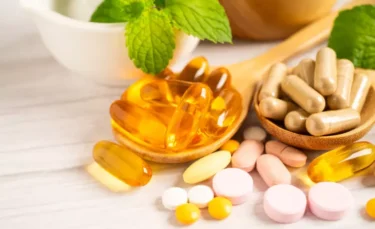
Certain meds and supplements may leave a metallic taste in your mouth1. These include:
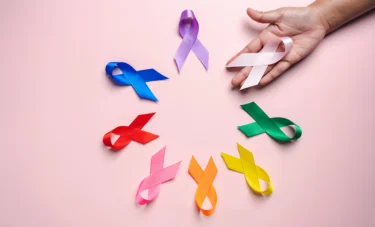
Cancer treatments like chemo or radiation may alter taste. This may bring about a metallic taste in your mouth2.
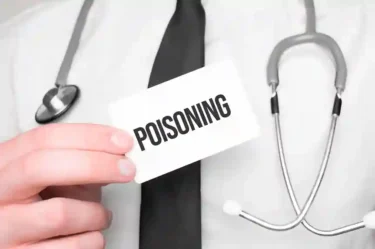
Coming in touch with toxins like mercury or lead can irritate your taste buds. This could give you a metallic taste.
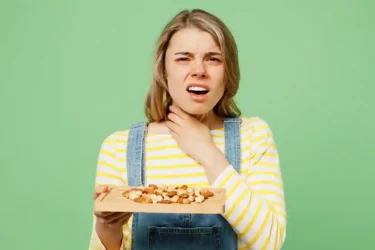
Food allergies can bring a metallic taste to your mouth. More severe reactions may show anaphylaxis symptoms. This calls for urgent medical help8.
A metallic taste can indicate a serious illness, such as kidney or liver problems, undiagnosed diabetes or certain cancers. But these reasons are uncommon and typically accompanied by other symptoms. If you’re otherwise healthy, the cause for that metallic tang typically is benign.
Dr. M.G. Kartheeka, MBBS, MD(Pediatrics)
The metallic taste may come and go for some. It might be harmless. But it’s wise to know when it’s time to see a healthcare professional.
Once the cause of the metallic taste is clear, you can work out a game plan with your healthcare provider on how to get rid of metallic taste in mouth. The aim is to tackle the issue and avoid a relapse.
Getting to the root of the metallic taste is crucial. So is making yourself comfortable as you navigate it.
The metallic taste in your mouth can be a bother. But don’t worry, it could be managed and potentially resolved. Knowing the cause is half the battle. Seeking medical ideas for diagnosing and treating it is crucial. A healthy lifestyle goes a long way too. If the metallic taste comes from an underlying health issue or medication, work with your healthcare provider. Find the best course of action and take charge of wellness.
Always listen to your body. Keep your eyes open for changes. Don’t shy away from discussing them with your doctor. The metallic taste may just be a passing phase. It could also hint at a larger issue needing a doctor’s attention. To ensure great health, stay aware, and stay proactive.
Yes, some COVID-19 patients have reported a metallic taste. This is only one among many symptoms. The exact cause for this taste change isn’t completely clear.
No exact deficiency causes a metallic taste. But end-stage liver failure might cause it. Wherein you may see low levels of B vitamins, vitamin C, zinc, and copper.
Usually, a metallic taste isn’t serious, but it can be. If it’s persistent, it’s best to check with a healthcare provider.
Start with looking after your oral hygiene. Stay hydrated. Eat non-metallic-tasting foods. Use flavor enhancers and mouth rinses. If needed, your healthcare provider can help you tackle any underlying health issues or medication-related side effects1.
The duration of the metallic taste depends on the cause. Short-term causes like a common cold will clear up when the infection does. If it’s medicine-related or due to a health issue, it takes longer.
See a healthcare provider if the metallic taste doesn’t leave. It’s particularly important if it’s coupled with bad symptoms.
Yes, adopting certain lifestyle changes such as maintaining good oral hygiene, staying hydrated, focusing on a well-balanced diet, and avoiding triggers like smoking and alcohol may help alleviate a metallic taste in the mouth.
A metallic taste can be an early symptom of anaphylaxis, a severe allergic reaction associated with certain foods or substances. However, it may also be a natural response to specific food allergens like shellfish or tree nuts8.
Some foods, like pine nuts, may cause a temporary metallic taste in the mouth – a condition known as “pine nut syndrome” or “pine mouth.” Additionally, the consumption of vitamins and supplements containing metals, such as zinc, copper, or iron, may also create a metallic taste.
A metallic taste upon waking can stem from various factors such as dehydration, oral health issues like gingivitis, or even acid reflux during sleep. Ensuring proper hydration and maintaining good oral hygiene can help alleviate this sensation. If it persists, consulting a healthcare provider is recommended.
The duration of a metallic taste during pregnancy varies among individuals. Typically, it may last throughout the first trimester due to hormonal changes, but it can subside sooner or persist longer for some women. If concerns arise, consulting a healthcare provider is advisable7.
Experiencing a metallic taste in the mouth can be a symptom of pregnancy7, particularly in the early stages due to hormonal changes. However, it’s not definitive proof of pregnancy and can also be caused by other factors such as certain medications1 or oral health issues. A pregnancy test or consultation with a healthcare provider can provide clarity.
A metallic taste in the mouth can sometimes indicate low iron levels, known as iron deficiency anemia. However, it’s essential to consider other potential causes as well, such as medication side effects1 or oral health issues. Consulting a healthcare professional for proper evaluation and testing is recommended.
A metal taste in mouth can indicate infection, particularly in cases like sinusitis or respiratory infections where postnasal drip can affect taste sensations. However, it’s essential to consider other symptoms and consult a healthcare professional for proper diagnosis and treatment.
While influenza (flu) itself typically doesn’t directly cause a metallic taste in the mouth, certain medications used to manage flu symptoms or complications may lead to this sensation as a side effect. If experiencing a metallic taste during flu, consulting a healthcare provider for evaluation and appropriate management is advisable.
Yes, antibiotics can sometimes lead to a metallic taste in the mouth as a side effect. This sensation typically resolves once the course of antibiotics is completed, but if it persists or becomes bothersome, consulting a healthcare provider is advisable.
Allergies can potentially cause a metallic taste in the mouth due to postnasal drip or sinus congestion affecting taste sensations. However, it’s essential to consider other factors and consult a healthcare professional for proper evaluation and management of allergies and related symptoms8.
Yes, vaping can cause a metallic taste in the mouth, often due to the ingredients in e-liquids or the heating coils used in vaping devices. This sensation may indicate irritation or inflammation in the mouth and respiratory tract, and reducing or quitting vaping is advisable if experiencing this symptom.
Yes, stress can lead to a metallic taste in the mouth as a result of changes in saliva composition and increased acidity levels. This sensation is often temporary and can be managed by practicing stress-reduction techniques such as mindfulness or deep breathing exercises.
Yes, a metallic taste can come and go during pregnancy7. This phenomenon, known as dysgeusia, is often experienced in the first trimester and can be influenced by hormonal changes, typically improving as pregnancy progresses.
The duration of a metallic taste after chemotherapy varies for each individual. It can last from a few days to several months after treatment ends, with some patients experiencing it intermittently during their entire chemotherapy course.
Yes, dry mouth can cause a metallic taste. Reduced saliva production affects taste perception and can lead to the development of unusual tastes, including a metallic flavor.
Yes, detoxing can cause a metallic taste. This occurs as the body releases and processes toxins, which can temporarily alter taste perception and result in a metallic flavor.
The metallic taste from metformin often diminishes over time as the body adjusts to the medication. If the taste persists, discussing it with a healthcare provider may help find a solution or alternative treatment.
A metallic taste can start as early as the first trimester of pregnancy7. This change in taste perception is often due to hormonal fluctuations, particularly increased levels of estrogen and progesterone.
Disclaimer: The information provided here is for educational/awareness purposes only and is not intended to be a substitute for medical treatment by a healthcare professional and should not be relied upon to diagnose or treat any medical condition. The reader should consult a registered medical practitioner to determine the appropriateness of the information and before consuming any medication. PharmEasy does not provide any guarantee or warranty (express or implied) regarding the accuracy, adequacy, completeness, legality, reliability or usefulness of the information; and disclaims any liability arising thereof.
Links and product recommendations in the information provided here are advertisements of third-party products available on the website. PharmEasy does not make any representation on the accuracy or suitability of such products/services. Advertisements do not influence the editorial decisions or content. The information in this blog is subject to change without notice. The authors and administrators reserve the right to modify, add, or remove content without notification. It is your responsibility to review this disclaimer regularly for any changes.
Most of the time, we don’t feel our heartbeat. And this is because, when our heart’s rhythm is normal, we usually don’t notice it. But, when it changes, we start to feel it. This is known as heart palpitation. It could be your heart beating too slow or too fast or even feeling like it stopped. Heart palpitations often feel like a fluttering, rapid, or irregular heartbeat. Individuals may feel that their heart is pounding, racing, or experiencing a skipped beat. Palpitations usually aren’t harmful, but they can be uncomfortable causing worry. Sometimes, they may be associated with underlying medical conditions.
Palpitations can arise for many reasons. These might be stress, heavy doses of caffeine or nicotine, excessive alcohol, hormones changing in women, certain medications or anaemia. Other heart palpitations reasons can be hyperactive thyroid, low potassium, or hypoglycaemia, irregular heartbeat or serious heart disease. In rare cases, a heart attack might also cause them1.
Did you know?
To effectively manage heart palpitations, you first need to diagnose the underlying cause. You must know when to get help and understand what your doctor may suggest.
If heart palpitations come with chest pain, shortness of breath, intense dizziness or a feeling of doom, it needs immediate medical attention. These heart palpitations symptoms could mean severe issues like arrhythmias or heart disease1.
Your healthcare provider will give you a physical check-up, listen to your heartbeats and look at your medical history. They may suggest some additional tests1.
The following cardiovascular assessments may be advised:
Dealing with heart palpitations requires multiple simultaneous approaches. Medical procedures, home remedies, and changes in diet can all come into play.
If heart palpitations are arising due a heart condition, medical procedure or medicine use may not be needed. In case of other underlying causes too such as hormonal issues or anaemia, medical management may be necessary. Your doctor can advise you best based on your condition1.
At home, you can also take some steps for managing heart palpitations. Avoiding things that spike palpitations can help. Controlling stress is also important. Yoga, meditation, and deep breathing can assist in this. Be sure not to use drugs like cocaine as they can cause palpitations too1.
Vagal maneuvers can slow your heart rate by stimulating the vagus nerve. This can involve putting cold water on your face, trying to gag, or dunking your face in cold water. But before trying these steps, consult your healthcare provider5.
Changing your diet can help avoid foods causing palpitations and increase those calming them.
Caffeine might potentially exacerbate heart palpitations in susceptible individuals. Therefore, if you experience heart palpitations, I strongly advise avoiding drinks or foods that contain caffeine, such as cola12.
Dr. Siddharth Gupta, B.A.M.S, M.D (Ayu)
Did you ever think about how much our diet influences heart palpitations? Some foods can lead to palpitations, while others can lessen them.
If you’re wondering what foods to avoid if you have heart palpitations, these are some of the foods that can actually set off or intensify palpitations in people prone to them.
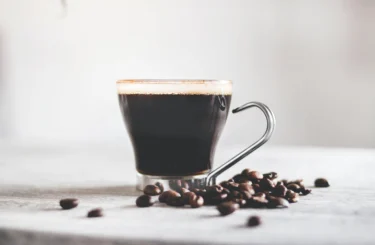
Caffeine and energy drinks can stimulate the nervous system causing heart palpitations. Even though occasional use is safe, too much caffeine can cause palpitations6,7.
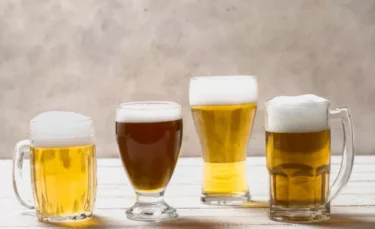
Excessive alcohol use can also cause heart palpitations. Cutting down or avoiding alcohol can help manage them1,6.
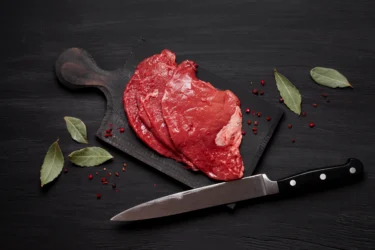
Red meat, high in saturated fats, can raise cholesterol and trigger palpitations. Swapping red meat for plant-based protein can aid in reducing this risk8.
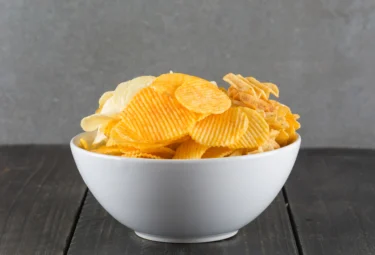
Highly processed foods such as canned soups or packaged meals often contain too much salt and preservatives. These could disturb the heart rhythm causing palpitations. Opting for fresh foods instead of processed ones is a more heart-healthy option6.

Excessive sugar intake can contribute to heart palpitations, as it may lead to sudden spikes and crashes in blood sugar levels. Limiting high-sugar foods can help manage blood sugar and lowers risk of heart diseases, thereby reduce the likelihood of associated palpitations6.
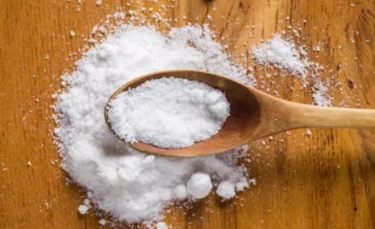
More salt means increased risk of high blood pressure thus more chance of palpitations. So, cut down on salt and keep palpitations in check6.
It’s ideal to avoid or consume the above-mentioned food items in limited quantity if you suffer from palpitations. However, for a more personalized plan, it’s best to discuss with a certified nutritionist.
But it’s not all doom and gloom. Some foods could help reduce frequent heart palpitations and support overall heart health.
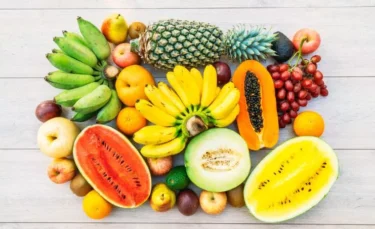
Fresh fruits are heart-healthy. They contain essential vitamins and potent antioxidants. Their soluble fibre can also lower bad cholesterol levels decreasing palpitations9.
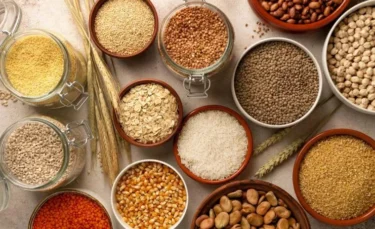
Whole grains support heart health through ample fibre content. This removes harmful cholesterol types, thus reducing the chance of heart disease and palpitations9.
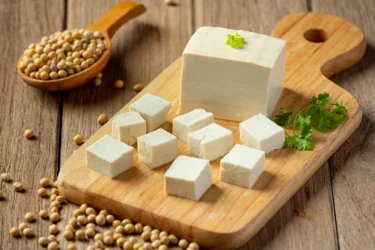
Soy foods are rich plant-based proteins. They offer various heart benefits like reducing blood pressure and cholesterol levels, helping in reducing palpitations10.
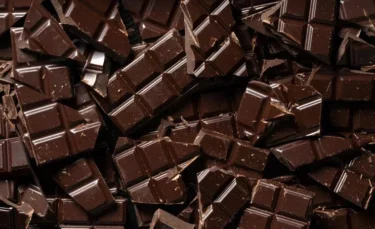
Magnesium is a mineral that helps proper functioning of heart. Magnesium administration has been shown to be beneficial in certain heart rhythm disoorders7. Thus, consuming foods rich in magnesium such as dark chocolate, avocado and nuts can help lower palpitations6.
Although further research is needed, some studies have found the benefits of a plant-based diet to help support normal heart rhythm7. It’s a good idea to follow a balanced diet and include the above-mentioned foods in your diet if you suffer from palpitations. But discuss with your doctor before including anything new in your routine diet if you suffer from underlying medical conditions.
Based on my understanding gained over the years, it is worth noting that certain foods, such as salami, and aged cheeses might potentially contribute to heart palpitations. These foods may contain a compound called tyramine, which has been associated with increased blood pressure13.
Dr. Rajeev Singh, BAMS
Lifestyle changes can have a big role in managing heart palpitations and keeping your heart healthy. Let’s see on how to do that.
I may suggest to stay away from consuming spicy foods, particularly when it comes to conditions such as heart palpitations. In my experience, I have observed that spicy foods might potentially trigger heart palpitations in certain individuals14.
Dr. Smita Barode, B.A.M.S, M.S.
Knowing more about heart palpitations, triggers, and effective management helps you lead a healthier life. Keeping active, having a balanced diet, getting enough rest and reducing stress can manage palpitations. Avoid food items like caffeinated drinks, excessive alcohol, red meat, processed or sugary foods and too much salt. But don’t forget that medical issues can also cause palpitations. So, always stay alert and seek medical help when needed.
Also Read: Food Items To Include In Your Diet If You Have Varicose Veins
A diet containing less known cardiac irritants and good amount of exercise, sleep and stress management can care for your heart.
If changing diet doesn’t ease heart palpitations, reach out to your healthcare provider. The palpitations might point to a hidden health issue needing medical attention.
While most palpitations are harmless, they can be discomforting. If they come with chest pain, loss of consciousness, uncommon sweating, dizziness or light-headedness, it’s serious. Seek medical help right away in such cases.
While occasional heart palpitations while sleeping can be normal, persistent or disruptive cases may indicate an underlying issue and should be evaluated by a healthcare professional for a comprehensive assessment.
In some cases, excessive gas and bloating may lead to increased pressure on the heart, causing palpitations. If symptoms persist or worsen, it’s advisable to consult a healthcare professional for a thorough evaluation.
To alleviate heart palpitations, try practicing deep breathing exercises, staying hydrated, and avoiding stimulants like caffeine. If symptoms persist or worsen, seek medical advice for a proper diagnosis and personalized treatment plan.
Yes, dehydration can contribute to heart palpitations by reducing blood volume and affecting electrolyte balance. Maintaining adequate hydration is important for cardiovascular health and may help prevent palpitations.
Vaping may contribute to heart palpitations, as certain substances in e-cigarettes can impact cardiovascular function. The long-term health effects of vaping, including its impact on heart health, are still being studied. Consultation with a healthcare professional is recommended for individuals experiencing palpitations related to vaping.
Yes, hormonal changes during menopause, particularly the decrease in oestrogen levels, can lead to heart palpitations in some women. While usually temporary, persistent or severe symptoms should be discussed with a healthcare professional.
Yes, gastro oesophageal reflux disease (GORD) can be associated with heart palpitations. The irritation of the oesophagus due to reflux may stimulate the vagus nerve, impacting heart rhythm. Consultation with a healthcare professional is advised for a proper evaluation.
The duration of heart palpitations varies, and they may last for a few seconds to several minutes. If palpitations persist or are accompanied by other concerning symptoms, it is advisable to consult a healthcare professional for a thorough evaluation.
Heart palpitations after eating can be triggered by various factors, such as the release of digestive hormones, increased blood flow to the digestive system, and consumption of stimulants like caffeine or high-sugar foods. Additionally, overeating or underlying medical conditions may contribute to this phenomenon.
Certain vitamins like magnesium and potassium play a role in maintaining heart rhythm, and deficiencies may contribute to palpitations. Ensuring a balanced diet with adequate levels of these vitamins can help support heart health and reduce the occurrence of palpitations.
For minimizing heart palpitations during sleep, lying on your left side is often recommended. This position can help reduce pressure on the heart and promote better blood flow, potentially decreasing the likelihood of palpitations.
Factors like anxiety, hormonal fluctuations, or sleep apnoea can contribute to heart palpitations at night; managing stress, maintaining a consistent sleep schedule, and addressing underlying health issues may help alleviate nighttime palpitations.
Disclaimer: The information provided here is for educational/awareness purposes only and is not intended to be a substitute for medical treatment by a healthcare professional and should not be relied upon to diagnose or treat any medical condition. The reader should consult a registered medical practitioner to determine the appropriateness of the information and before consuming any medication. PharmEasy does not provide any guarantee or warranty (express or implied) regarding the accuracy, adequacy, completeness, legality, reliability or usefulness of the information; and disclaims any liability arising thereof.
Links and product recommendations in the information provided here are advertisements of third-party products available on the website. PharmEasy does not make any representation on the accuracy or suitability of such products/services. Advertisements do not influence the editorial decisions or content. The information in this blog is subject to change without notice. The authors and administrators reserve the right to modify, add, or remove content without notification. It is your responsibility to review this disclaimer regularly for any changes.
Fluctuations in a woman’s sex drive are natural and often influenced by various physical, emotional, and lifestyle factors. However, a noticeable or persistent decline in sexual desire can sometimes indicate an underlying concern that may benefit from professional attention. Understanding female libido, what affects it, and how to support it is an important part of maintaining overall well-being.
This article aims to provide evidence-based information from a gynaecological perspective to help you better understand the factors that may influence female libido. We will discuss potential causes such as hormonal changes, stress, mental health, medical conditions, and lifestyle habits. Additionally, we will explore general wellness strategies and when it may be appropriate to consult a qualified healthcare provider.
Recognising the underlying reasons for a decrease in sexual desire is an important step towards addressing it effectively. Female libido is influenced by a range of physical, emotional, hormonal, and psychological factors. By understanding what may be contributing to low libido, individuals and healthcare professionals can work together to identify safe, appropriate, and personalised approaches that support overall well-being and quality of life.
Several medical conditions can affect female libido. In such cases, a comprehensive clinical assessment by a qualified healthcare professional is essential.
Stress, anxiety and depression can significantly influence a woman’s interest in sexual activity. These conditions often reduce energy levels, affect mood, and interfere with the ability to feel emotionally connected or relaxed, factors that are important for a healthy libido. In some cases, the medications used to treat these conditions may also impact sexual desire4.
Post childbirth, hormonal changes, and fatigue could lead to a decline in libido. The demands of caring for a newborn, combined with fatigue and sleep deprivation, can also affect libido.
Breastfeeding may play a role by lowering oestrogen levels, which can lead to vaginal dryness and reduced interest in sexual activity. In addition, concerns related to body image, healing after delivery, and adapting to new parenting responsibilities may further influence a woman’s sexual well-being during the post-partum period5.
Certain medications may contribute to a decrease in sexual desire. For example, some antidepressants, particularly selective serotonin reuptake inhibitors (SSRIs), are known to affect libido in some individuals. These medications can influence the brain’s chemical balance, which may in turn impact sexual interest and responsiveness.
Additionally, the use of combined oral contraceptive pills may lower libido in some women. This is thought to be due to a reduction in free testosterone levels, a hormone that plays a role in sexual desire6.
It is important not to stop or adjust any prescribed medication without consulting a qualified healthcare professional. If low libido is suspected to be a side effect of medication, a healthcare provider may be able to recommend alternatives or supportive strategies.
Adopting healthy habits is vital for good sexual health. Unhealthy habits like lack of exercise, a poor diet, excessive alcohol, and smoking can decrease libido7.
Mood disorders and the associated medications, high blood pressure, diabetes or simply changing a medicine that you usually take for medical conditions can cause a change in female sex drive (libido). Talk to your gynaecologist or general physician to find out a cause for change in the libido and find a suitable solution for the same.
Dr. Ashish Bajaj, M.B.B.S., M.D. in Clinical Pharmacology and Toxicology
A decline in sexual desire can be concerning, but it is important to remember that support is available. Several evidence-based approaches can help address the underlying causes of low libido and improve overall sexual well-being. The most suitable treatment will depend on individual circumstances and should ideally be guided by a qualified healthcare professional.
Counselling and education around sexual health can be highly beneficial, especially when no underlying medical condition is present. Speaking with a qualified mental health professional, such as a psychiatrist or psychologist, can help address emotional, psychological, or relational factors contributing to low libido.
Sexual health counselling may involve exploring communication within relationships, managing stress, improving body image, and understanding sexual response. In many cases, these interventions can significantly enhance intimacy and sexual satisfaction.
Hormone therapy may help improve sexual desire in women with confirmed hormonal imbalances. Oestrogen treatment can relieve symptoms such as vaginal dryness, which may support libido. In select cases, testosterone or DHEA therapy may be considered particularly for postmenopausal women diagnosed with hypoactive sexual desire disorder (HSDD). These treatments should only be used under specialist medical supervision8.
Adopting healthy lifestyle habits can positively influence sexual desire. Regular physical activity, a balanced diet, and stress management all contribute to overall well-being and may support libido. Ensuring adequate levels of nutrients such as iron and vitamin B12 is also important, as deficiencies particularly anaemia can lead to fatigue and reduced sexual interest.
When conventional approaches are not effective, some individuals explore complementary options.
L-arginine, DHEA, maca root, ginseng, black cohosh, red clover, chasteberry fruit, and ginkgo are some natural supplements that may help increase libido10. Herbal remedies should be used cautiously and only under medical supervision, many lack FDA approval, and some may interfere with medications or hormone-sensitive conditions.
Positive body image and self-esteem can support sexual well-being. Feeling confident and comfortable with oneself may contribute to improved libido.
Foods like honey and coffee are sometimes linked to increased arousal, though evidence is mostly anecdotal. Such foods may complement a healthy lifestyle but should not be relied upon as primary treatments11. While no solution offers instant results, seeking medical advice is advised for improvement in sexual health.
If low libido is causing distress, affecting the quality of life, or impacting your mental health or relationships, you should consult a doctor.
We cannot improve libido instantly. However, Ginseng, L-arginine, gingko biloba, and maca are a few ingredients that have been studied for their ability to improve female libido and sexual function. Certain practices like yoga and acupuncture may also be beneficial when paired with a healthy lifestyle.
Dr. M.G. Kartheeka, MBBS, MD(Pediatrics)
Each person’s libido varies and so do the factors affecting it. Improving libido requires understanding of both medical and emotional factors. From hormone imbalances to lifestyle habits, multiple contributors may be at play. Begin with healthy habits, open communication with your partner, and timely consultation with your gynaecologist. Tailored treatments, ranging from counselling to hormonal or vaginal therapies can offer safe and sustainable solutions.
DHEA, maca root, ashwagandha, vitamin E with ginseng, and zinc are some. But their effectiveness varies and scientific proof backing their claims is limited. So, it is advised to consult with a healthcare provider before starting any supplement regimen.
Female libido booster foods like truffles, coffee, dark chocolate, bananas and avocados have been linked to increased arousal. But the extent to which these foods can specifically boost libido can vary and is yet to be confirmed scientifically.
FDA has approved a drug called flibanserin (Addyi) and bremelanotide (Vyleesi) for premenopausal women with HSDD. These are not female versions of Viagra and work differently
Women can follow good dietary habits, exercise regularly, sleep enough and manage stress. Having honest communication and focusing on foreplay in a relationship can also help. In case these measures don’t work, consult with a healthcare provider about medical treatments
Yes, female libido can often be restored through a combination of addressing underlying physical or psychological factors, adopting a healthy lifestyle, and exploring appropriate therapeutic interventions. Consulting with a healthcare professional can help identify personalized strategies for restoring and enhancing female libido.
While testosterone plays a role in female sexual function, its impact on libido is complex and varies. Some studies13 suggest that testosterone therapy may enhance female libido in certain cases, but it’s essential to consult with a healthcare professional to assess individual needs and potential risks before considering such interventions.
The effectiveness of hypnosis in enhancing female libido is not firmly established, and its impact varies among individuals. Consultation with a healthcare professional is advised to explore evidence-based approaches and address underlying factors contributing to changes in female libido.
While some studies12 suggest fenugreek may have potential benefits in boosting female libido by influencing hormonal levels, more research is needed to establish its effectiveness. It’s advisable to consult with a healthcare professional before incorporating fenugreek or any supplements into one’s routine.
Various factors can impact female libido, including hormonal changes, stress, relationship issues, medical conditions, and certain medications. Identifying and addressing these underlying factors, with guidance from a healthcare professional, can help improve female libido.
Vitamin D is associated with female libido, as it plays a role in hormone regulation. Ensuring adequate vitamin D levels through sunlight exposure, diet, or supplements may positively influence female sexual health, but individual needs vary.
Disclaimer: The information provided here is for educational/awareness purposes only and is not intended to be a substitute for medical treatment by a healthcare professional and should not be relied upon to diagnose or treat any medical condition. The reader should consult a registered medical practitioner to determine the appropriateness of the information and before consuming any medication. PharmEasy does not provide any guarantee or warranty (express or implied) regarding the accuracy, adequacy, completeness, legality, reliability or usefulness of the information; and disclaims any liability arising thereof.
Living in a stressful world is a fact of life. Work, personal issues and daily challenges can upset our body’s cortisol balance. Cortisol, also known as the ‘stress hormone,’ is key to this process. But what is the best way to keep cortisol levels in check? Let’s explore.
This guide will give you a fresh look at cortisol and offer ways to keep it balanced. Plus, it will answer common questions about cortisol.
Did you know?
Cortisol is a steroid hormone made by our adrenal glands. Usually labelled as the “stress hormone”, it has more to it. Let’s explore its role and the impact of its ups and downs on us.
Cortisol works as follows1:
Balance is the key here. Both high and low cortisol levels can cause problems2.
Patients commonly presenting with frequent headaches, unexpected weight gain, irritability, and hypertension may be diagnosed to have increased cortisol levels. Having a correct cortisol balance is essential for your health, and producing too much or too little cortisol can cause health problems.
Dr. Ashish Bajaj, M.B.B.S., M.D. in Clinical Pharmacology and Toxicology
What disrupts the cortisol balance? Cortisol levels can get out of sync for several reasons. Common disruptors include:
High cortisol3 may lead to
As mentioned, cortisol has a hand in many vital functions of the body4,5. So if its levels go haywire, our health could take a hit, ranging from minor to severe issues.
L-theanine is an amino acid found in black tea, green tea, and some brands of dark chocolate. Research suggests it produces a state of calmness for up to three hours by reducing cortisol levels and blunting cortisol responses.
Dr. M.G. Kartheeka, MBBS, MD(Pediatrics)
Now that we know why it’s essential to keep cortisol levels in check, let’s look at ways to manage and regulate them better.
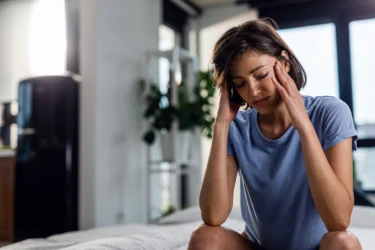
Stress and cortisol are linked. A consistent daily routine of stress-management is key to regulating cortisol, as controlling stress directly influences your body’s hormone levels.
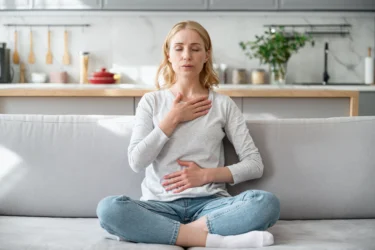
As much as activity matters, so do periods of rest. These ‘rest’ sessions allow your body to relax and cut back on cortisol release.

“We are what we eat.” This phrase holds true for cortisol, too. The foods you consume can either contribute to a rise in cortisol or help regulate it6,7.
Although initial studies have shown that these food items may be helpful, further large-scale human trials are needed to prove this. It is best to consume them in moderation.
Following a healthy diet and lifestyle is beneficial. But cases of high cortisol levels in lab reports must be evaluated and treated by an endocrinologist. Very high cortisol levels will not respond merely by diet and lifestyle changes.
Dr. Arpit Verma, MBBS, MD (Pharmacology)
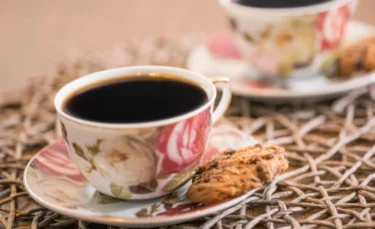
Caffeine might perk you up, but it’s a cortisol buster. Drinks with caffeine like coffee can kick up cortisol, leading to a brief spike in its levels. Try cutting back on caffeine, especially before bedtime, to avoid throwing off the sleep pattern4.
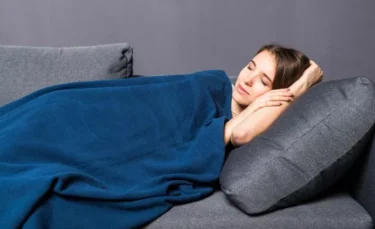
There’s nothing like a good night’s sleep to revitalize body and mind. Good, consistent sleep lets cortisol levels reset, leaving you fresh for the next day6. Create a calming pre-sleep routine, try to wake and sleep at the same time each day, and make sure your resting space invites sleep.
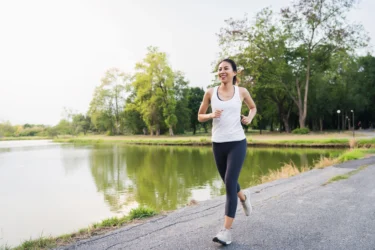
Physical activity lifts your mood naturally. Regular exercises at moderate intensity can reduce cortisol and up the levels of endorphins, nature’s happy hormones6,8.
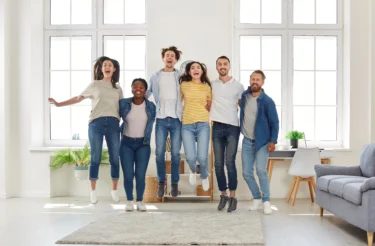
Good times with loved ones and social activities are key to warding off stress. Strong bonds and positive social events breed joy and provide necessary emotional support, all of which help manage stress and, in turn, cortisol levels6,8.

Dealing with cortisol requires a full-picture approach rather than piecemeal solutions. Choosing a lifestyle that includes more calming activities could bring bigger rewards.
Dealing with life’s stresses can be challenging and affect our health. Understanding cortisol’s impact on health, and how to manage it can seem intimidating, but it’s achievable. It’s essential to recognize that cortisol itself is not the problem; the imbalance is. Stress management, a balanced diet, sufficient sleep, exercise, and nurturing relationships are essential for managing cortisol levels. Additionally, simple lifestyle adjustments and the use of scientifically-supported supplements can help maintain a healthy cortisol balance.
Several factors can cause abnormal cortisol levels. Chronic stress, poor sleep, unhealthy diet, and certain medical conditions like Cushing Syndrome, Addison’s disease, and adrenal insufficiency could all disrupt normal cortisol regulation. Some medications, particularly corticosteroids, can increase cortisol levels as well.
There are no magic tricks to drop cortisol levels instantly. However, long-term lifestyle changes like stress management, regular exercise, and a healthy diet can help manage cortisol levels effectively over time. Methods like deep breathing or meditation can also bring quick calming effects.
Certain foods such as green tea, dark chocolate (in moderation), bananas, and garlic can lower cortisol levels. Citrus fruits and strawberries, which are rich in Vitamin C, may help stabilize cortisol, although long-term studies are needed to corroborate this.
Yes, there are some natural ways. Controlling stress, ensuring enough sleep, regular exercise and a balanced diet are just a few natural ways to manage cortisol levels.
High cortisol over time can lead to swift weight gain mainly in the face and upper body, thinner skin that bruises easily, and mood swings. It can cause irregular menstrual cycles in women too.
If you notice physical signs of high cortisol like fast weight gain, high blood pressure, or mood swings, it’s time to see a doctor. Your healthcare provider will tell you if and when it would be appropriate to get your cortisol levels checked.
For most people, it’s possible to keep cortisol balanced by adopting healthy habits like managing stress, regular exercise, eating a nutritious diet, ensuring good sleep, and nurturing healthy relationships. But if changes in lifestyle aren’t enough to manage levels or severe symptoms show up, it’s important to seek advice from a healthcare provider as it may be an underlying health issue.
Disclaimer: The information provided here is for educational/awareness purposes only and is not intended to be a substitute for medical treatment by a healthcare professional and should not be relied upon to diagnose or treat any medical condition. The reader should consult a registered medical practitioner to determine the appropriateness of the information before consuming any medication. PharmEasy does not provide any guarantee or warranty (express or implied) regarding the accuracy, adequacy, completeness, legality, reliability, or usefulness of the information; and disclaims any liability arising thereof.
Links and product recommendations in the information provided here are advertisements of third-party products available on the website. PharmEasy does not make any representation of the accuracy or suitability of such products/services. Advertisements do not influence the editorial decisions or content. The information in this blog is subject to change without notice. The authors and administrators reserve the right to modify, add, or remove content without notification. It is your responsibility to review this disclaimer regularly for any changes.
Emerging research and traditional health systems suggest that what we eat may play a role in supporting sexual health. This article explores how certain dietary habits and lifestyle adjustments might contribute to improved sexual well-being in both men and women. While diet is not a standalone cure, it can be one part of a broader, medically informed approach to enhancing sexual health.
This article also highlights the importance of open communication with partners, attention to mental health, and regular medical check-ups. Sexual health is influenced by a complex interplay of physical, psychological, hormonal, and relational factors, far beyond just performance.
Reminder: The information shared here is for educational purposes only and the reader should consult a registered medical practitioner before implementing any changes to their health routine.
To support sexual well-being, it is important to understand common conditions such as premature ejaculation and erectile dysfunction. These issues can affect individuals of various ages and may be linked to a range of physical, psychological, and lifestyle factors.
Premature Ejaculation refers to a condition in which ejaculation occurs sooner than desired, often shortly after sexual activity begins, and with minimal stimulation. Erectile Dysfunction is the persistent difficulty in achieving or maintaining an erection sufficient for satisfactory sexual intercourse1.
A whole lot of things can lead to these conditions, these include, stress, worry, sadness, guilt, or certain physical illnesses2.
Brain chemistry and healthy blood flow to the genital area play a significant role in sexual function. Disruptions in hormone levels, imbalances in neurotransmitters (the brain’s chemical messengers), and impaired circulation can all contribute to conditions such as erectile dysfunction and premature ejaculation1.
There are several natural approaches that may help improve sexual stamina and overall satisfaction. Making certain lifestyle modifications, such as managing stress, maintaining a balanced diet, engaging in regular physical activity, and seeking appropriate therapeutic support can contribute positively to sexual health. However, it is important to note that individual results may vary, and such measures should not be viewed as guaranteed solutions.
Sexual stamina may be supported through small yet consistent adjustments to one’s daily routine. Incorporating healthier habits, such as improved sleep, balanced nutrition, regular exercise, and stress reduction can have a beneficial impact on overall sexual well-being2.
Smoking has been shown to impair blood circulation, increase the risk of erectile dysfunction, and reduce sperm quality and count. Quitting tobacco use can significantly improve vascular health and may contribute to better sexual function and fertility outcomes3.
Engaging in regular physical activity supports cardiovascular health, which is essential for maintaining adequate blood flow throughout the body, including the genital area. Improved heart health can, in turn, enhance sexual stamina and overall physical endurance4.
According to Ayurvedic medicine10, the tuberous roots of Chlorophytum borivilianum, also known as safed musli, have immunomodulatory and adaptogenic properties. These properties are thought to support overall well-being and, in some traditional contexts, have been associated with improved male reproductive health, including enhanced vitality and sexual function.
Dr. Siddharth Gupta, B.A.M.S, M.D (Ayu)
Some of the different therapies that may help improve sexual stamina are as follows:
Acupuncture is a traditional therapy that may stimulate the nervous system and influence hormone release, potentially supporting sexual stamina. However, current evidence is limited, and it should be considered a complementary approach under professional guidance5.
Seeking professional support, such as counselling, can provide valuable guidance and strategies to address challenges related to sexual health6.
Finally, it is important to consult a healthcare professional to exclude any underlying medical conditions that may be affecting your sexual health2.

Oysters are traditionally regarded as an aphrodisiac, largely because they are rich in zinc. Zinc plays an important role in testosterone production, which may contribute to supporting sexual health and stamina. However, it is important to note that scientific evidence linking oyster consumption directly to improved sexual performance is limited7.

Dark chocolate contains flavonoids that help improve blood flow and boost mood. It also contains a chemical called phenylethylamine which can stimulate the release of endorphins, thereby, promoting feelings of pleasure and well-being7.
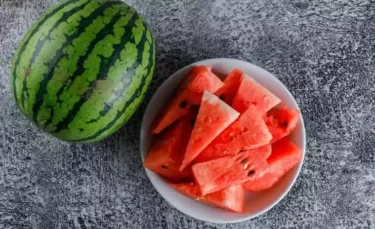
Watermelon is a refreshing fruit that contains an amino acid called citrulline which relaxes blood vessels and improving circulation. Improved blood flow can potentially enhance sexual performance7.
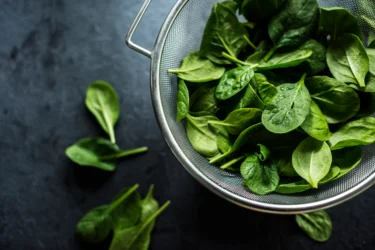
Spinach is rich in nutrients, such as folate, magnesium, and vitamins, which help increase blood flow and promote overall cardiovascular health. These benefits may help boost energy and support vitality7.
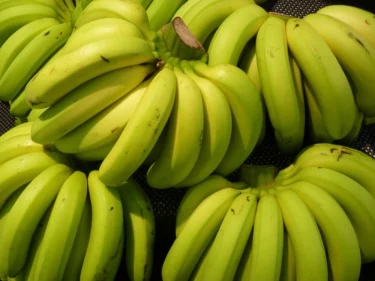
Bananas are rich in potassium, which supports muscle function, including the muscles involved in sexual activity. They also contain bromelain, an enzyme that some traditional sources suggest may enhance libido. However, scientific evidence supporting this effect is limited and inconclusive7.
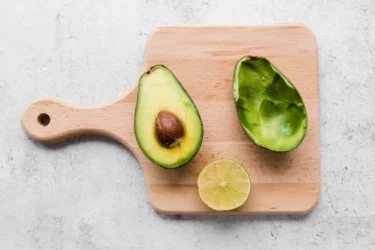
Avocados are a source of healthy fats, vitamin E, and potassium. These nutrients support cardiovascular health, enhance blood flow, and promote energy levels, potentially helping sexual stamina7.
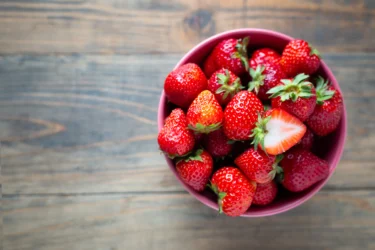
Strawberries are not only delicious but also contain high levels of antioxidants, vitamins, and minerals. They can improve blood flow and promote heart health, potentially contributing to sexual stamina7.

Almonds are a nutrient-dense snack that provides essential fatty acids, vitamins, and minerals. They contribute to cardiovascular health and provide sustained energy, which may help support physical endurance, including sexual stamina7.

Ginseng is an adaptogenic herb that has been used traditionally to boost energy levels and enhance sexual performance. Some preliminary studies suggest that it may help improve stamina and reduce feelings of fatigue7.

Fatty fish like salmon, mackerel, and sardines are rich in omega-3 fatty acids, which promote cardiovascular health and improve blood flow. These benefits may contribute positively to overall sexual vitality7.
Based on traditional use and preliminary observations, Tribulus terrestris (commonly known as Gokharu) is believed to support libido and sperm production. It is thought that extracts of this plant may influence androgen metabolism, potentially increasing levels of testosterone, luteinising hormone, and related hormones. These hormonal effects are proposed to contribute to improved sexual function and reproductive health in men10.
Dr. Smita Barode, B.A.M.S, M.S.
Many over-the-counter products claim to treat premature ejaculation and erectile dysfunction; however, in the absence of rigorous scientific evidence, these remedies may be ineffective or potentially unsafe. It is essential to consult a healthcare professional before using such products.
Although some treatments are available without a prescription, they may carry significant risks, including side effects, allergic reactions, or dangerous interactions with other medications. It is important to exercise caution and seek medical advice before using any such products2.
Avoid using treatments that have not been approved or recommended by a qualified healthcare professional. Always consult your doctor before commencing any therapy for sexual health concerns.
Also Read: Top 18 Zinc-Rich Foods For Vegetarians
While nutrition plays an important role in supporting sexual health, it is only one part of a broader picture. Other crucial factors include mental well-being, hormonal balance, physical fitness, and open communication with one’s partner.
Discussing concerns and strategies to enhance sexual well-being with your partner can strengthen emotional intimacy and improve relationship satisfaction.
Engaging in extended foreplay and exploring a variety of sexual techniques can enhance mutual satisfaction and reduce performance-related anxiety, contributing to a more fulfilling and relaxed sexual experience9.
In some cases, medical devices or prescribed medications may be necessary to address sexual health concerns. It is essential to consult a qualified healthcare professional before initiating any such treatment.
Based on traditional use, Mondia whitei, commonly known as White’s ginger has been used in some cultures to help manage erectile dysfunction and enhance libido. It is also traditionally believed to support sperm production and male reproductive health10.
Dr. Rajeev Singh, BAMS
It is important to recognise that psychological well-being plays a significant role in sexual performance. Factors such as stress, anxiety, and self-esteem can greatly influence one’s sexual experience and satisfaction2.
Chronic stress can significantly reduce libido and impact overall sexual well-being. Incorporating stress-reducing practices such as deep breathing exercises, mindfulness meditation, or yoga into your daily routine may help improve mental balance and support a healthier sex life2.
Practising mindfulness can support better mental health by enhancing focus and self-awareness. This may, in turn, improve self-control and contribute to increased sexual stamina8.
Also Read: Why Does Sperm Sometimes Smell Fishy?
Experiencing challenges related to sexual health can feel overwhelming, but they are often manageable with the right support and guidance. A multifaceted approach—including nutritious food choices, the inclusion of omega-3 fatty acids, mental wellness practices, and open communication with one’s partner can be beneficial.
Combining these strategies with a clear understanding of one’s condition, appropriate lifestyle modifications, professional counselling, and, where necessary, medical treatment, can lead to a more satisfying and balanced sex life.
It is essential to remember that sexual health is not solely about performance. It also encompasses comfort, consent, emotional intimacy, and mutual satisfaction. Both men and women are encouraged to consult a qualified healthcare professional for personalised advice, especially when facing issues such as chronic pain, vaginal dryness, or hormonal imbalances that may affect intimacy.
Also Read: Does Masturbation Cause Weight Loss? Debunking Sexual Health Misconceptions
Certain exercises, such as Kegel exercises, the ‘stop-start’ technique, and maintaining overall physical activity, may help support improved sexual control and stamina.
Simple but effective measures, such as quitting smoking, engaging in regular physical activity, and seeking appropriate therapeutic support can assist in managing premature ejaculation when tailored to individual needs.
A diet rich in fruits, vegetables, and foods containing omega-3 fatty acids is beneficial for overall health, including sexual well-being.
Yes, premature ejaculation refers to reaching climax sooner than desired during sexual activity. Erectile dysfunction, on the other hand, involves difficulty in achieving or maintaining an erection sufficient for satisfactory intercourse.
You should consult a healthcare professional if premature ejaculation occurs frequently or if you experience pain during sexual activity. Additionally, routine medical check-ups can help identify any underlying health issues that may be affecting your sexual well-being.
To support sexual stamina, it is advisable to limit the intake of foods high in sugar and refined carbohydrates, as these may lead to fluctuations in energy levels. Additionally, reducing alcohol consumption can have a positive impact on sexual performance and endurance.
Ashwagandha is believed to enhance sexual stamina by reducing stress and improving energy levels. Its adaptogenic properties help in balancing hormones, which can contribute to improved sexual performance.
While alcohol can reduce anxiety and delay ejaculation, it often impairs overall sexual performance and stamina. Excessive drinking can lead to difficulties in achieving and maintaining an erection.
Yes, regular exercise improves cardiovascular health, boosts stamina, reduces stress, and enhances overall physical fitness, all of which can contribute to improved and prolonged sexual performance.
Lasting longer in bed can be influenced by genetic factors, such as hormonal levels and neurological function. However, lifestyle choices, mental health, and physical fitness also play significant roles in sexual stamina.
Disclaimer: The information provided here is for educational/awareness purposes only and is not intended to be a substitute for medical treatment by a healthcare professional and should not be relied upon to diagnose or treat any medical condition. The reader should consult a registered medical practitioner to determine the appropriateness of the information and before consuming any medication. PharmEasy does not provide any guarantee or warranty (express or implied) regarding the accuracy, adequacy, completeness, legality, reliability or usefulness of the information; and disclaims any liability arising thereof.
Discussing the pleasures and health benefits of certain solo endeavours may raise many eyebrows, such as in the case of masturbation and its association with prostate cancer. It is a malignant tumour of the prostate gland and is one of the main causes of death due to cancer in men worldwide. It is the third most common cancer in Indian men and has been linked to risk factors like vasectomy procedures, obesity, diabetes mellitus, and poor BMI1. Men will be glad to know that studies suggest that frequent ejaculation through intercourse or masturbation has health benefits, and lowering the risk of prostate cancer is one of them2. Contrary to popular belief, masturbation, if done in moderation, does not increase the risk of prostate cancer.
Masturbation is a common sexual act that has been misunderstood and seen as taboo by society. It involves self-stimulation of the genitalia to achieve sexual release, orgasm, or ejaculation and feel sexual pleasure. People of all genders and sexual orientations can engage in this private activity. It can be both self or partner-assisted.
The ejaculate in men is essentially semen, which contains a large portion of the seminal fluid, a sperm-nourishing liquid. The prostate gland, which is found in men just below the urinary bladder, is responsible for producing this seminal fluid. Hence, the close link between masturbation and prostate cancer cannot be ignored2.
Regular masturbation can be beneficial for the prostate’s health, which can thereby reduce the risk of prostate cancer. Here are a few benefits of masturbation:
One of the most extensive studies was published in European Urology in 2016, in which over 31,000 males were followed for over 20 years. The researchers concluded that frequent ejaculators (irrespective of masturbation or intercourse) had lower prostate cancer rates than other males4.
The precise reason for the positive relationship between masturbation and prostate cancer is not entirely understood since the cancer of the prostate gland is multifactorial. Studies show prolonged contact between the cells of the prostate gland and their secretions, such as seminal fluid, which contains sufficient levels of zinc, phosphates, citric acid, and the male hormone di-hydrotestosterone (DHT), may accelerate the growth of cancer5. Hence, it may be derived that masturbation reduces the contact between the cells and fluids of the prostate gland. However, this fact has yet to be proven.
There are several factors as mentioned below that affect the risk of developing prostate cancer. While some of these factors are beyond our control, knowing them can still help men make wise choices regarding their health6.
Also Read: Penile Cancer: Symptoms, Diagnosis & Treatment
While the research on the specific benefits of masturbation for prostate health is still developing, several studies have been conducted to provide an overview of the psychological and physiological health advantages of masturbation and other sexual behaviours that cause ejaculation in men5,7.
The following are a few potential advantages of masturbation for prostate health:
Masturbation and prostate cancer have an intricate relationship. As explained, prostate cancer risk can be decreased by ejaculations through sexual acts like masturbation5,7.
Masturbation involves external genital stimulation, which indirectly affects the prostate gland. This stimulation may keep the gland active, induce the healthy formation of seminal fluid, and drain the fluid periodically. All of these processes are natural and necessary to maintain the health of a secretory gland5,7.
Sexual activity, including masturbation, improves blood flow to the genital area. An increase in blood flow can help the prostate gland function optimally by supplying it with oxygen and other vital nutrients5,7.
Masturbation is a private, intimate, fulfilling, and pleasurable sexual activity that can help people unwind and reduce stress. Prostate difficulties and other health problems have been related to chronic stress. Masturbation may indirectly improve prostate health by lowering stress levels5,7.
Masturbation gives people a chance to know their bodies, sexual preferences, and reactions. Understanding sexual desires and pleasure can help with sexual self-awareness. Accepting your own sexuality and engaging in sexual behaviours that are pleasurable and satisfying, can both be beneficial for your sexual well-being5,7.
Studies suggest that infrequent ejaculation can improve sperm count and volume, while frequent ejaculation can often enhance sperm quality, morphology, and DNA fragmentation (breakages and patterns in the genetic material of the sperm)8.
Following an orgasm, your body releases oxytocin, a stress-reducing hormone, and blocks cortisol, a stress-inducing hormone. Research9 says that orgasms shorten the time it takes to fall asleep and enhance the quality of sleep.
Also Read: How Exercise Can Help You Deal with Breast Cancer
The inverse relationship between masturbation and prostate cancer clearly requires more scientific studies. In a country like India, it is still difficult for physicians to record a detailed history of self-stimulation or masturbation. There is a long way to go before doctors start prescribing ‘masturbation’ for better sexual health. The majority of factors that increase the chances of prostrate cancer, such as age and family history of the illness, are unchangeable. Hence, if there exists a natural and pleasurable way of reducing the risks of prostate cancer, then why not try it?
Also Read: Is Daily Sex Good for Health?
The frequency of ejaculations varies greatly from person to person and is affected by factors like age, health, and sexual choices. There is no set quota or suggested frequency for ejaculation. However, excessive acts of masturbation could be bad.
An infection or inflammation of the prostate gland, known as prostatitis, is caused by bacteria or other elements. In some people, excessive intercourse, including many ejaculations, may cause momentary pain or annoyance in the prostate or pelvic region. A proposed reason for the symptoms of chronic Prostatitis/Chronic pelvic pain syndrome is frequent ejaculation-associated free radical and lactic acid accumulation, which results in noninfectious inflammation and muscle weakness, not prostatitis10.
Age, sedentary lifestyle, chronic stress, and processed food/ red meat are a few aggravating factors in prostate cancer. If you have a family history of prostate cancer, it is best that you stay away from these.
Maintain a healthy weight, avoid processed foods with preservatives, hydrate yourself better, exercise regularly and avoid self-medicating with hormonal supplements that may derange the levels of testosterone to keep your prostate healthy
-Difficulty in the start of urination
-An interrupted flow of urine
-The desire to urinate multiple times, especially at night
-Pain while urinating
-Mild specks of blood in the urine and the semen
Disclaimer: The information provided here is for educational/awareness purposes only and is not intended to be a substitute for medical treatment by a healthcare professional and should not be relied upon to diagnose or treat any medical condition. The reader should consult a registered medical practitioner to determine the appropriateness of the information and before consuming any medication. PharmEasy does not provide any guarantee or warranty (express or implied) regarding the accuracy, adequacy, completeness, legality, reliability or usefulness of the information; and disclaims any liability arising thereof.
Blood cells known as platelets help stop bleeding by the formation of blood clots. In adults, an ordinary platelet count or level is between 150,000 and 450,000 platelets per microliter of blood. However, sometimes these levels might differ and get reduced due to certain conditions.
Insufficient platelet count known as thrombocytopenia, causes easy bruising and bleeding tendencies. It lead to lack of blood clot formation making it difficult for the bleeding to stop after an injury1. In this blog, we will discuss about low platelet counts in detail- their causes, presentation and management.
One of the initial signs, when they do occur, is a cut that will not stop bleeding. Additional signs include2,3:
Symptoms of low platelet count2:
Some patients with moderately low platelet count do not exhibit any symptoms. They may also report nonspecific symptoms like easy bruising, skin rashes and bleeding from gums and other areas of mouth1,2.
There are three primary causes of reduced platelets:
Insufficient platelets are produced in the bone marrow
If you suffer from either of the following kinds of disorders, your bone marrow might not produce enough platelets.
In aplastic anaemia, the bone marrow fails to produce enough blood cells. This might be due to1:
In the case of myelodysplastic syndrome, the bone marrow either produces insufficient or faulty blood cells. This might be due to1:
The factors that contribute to a low platelet count are crucial for identifying individuals who may be at risk4:
Diagnostic methods for low platelet count:
Healthcare providers can often improve platelet counts by addressing the underlying cause, which may involve changes in medication. Additional treatment options may include:
Also Read: How To Increase Platelet Count Naturally
It is important for your doctor to know if you have any medical conditions or take medications that increase your risk of developing thrombocytopenia. If you are not sure, consult your doctor to find out if there are any prescription drugs or activities you should avoid.
Severe low platelet count can make patients more prone to1,8:
Thrombocytopenia symptoms can develop suddenly or over the years. It might also cause bleeding in more than one part of your body. Seek immediate medical help if1:
Low platelet count, or thrombocytopenia, can arise from various causes ranging from infections and medications to chronic health conditions. Therefore, recognising symptoms such as easy bruising, prolonged bleeding, or unexplained fatigue is crucial for timely diagnosis.
With proper medical evaluation and treatment, whether through lifestyle changes, medications, or targeted therapies, most cases can be effectively managed. Keep in mind that early detection and appropriate care play a key role in preventing complications and ensuring better health outcomes.
Complete Blood Count test, blood clotting time test, and peripheral blood cells test1.
Based on the root cause of low platelet count, doctors help improve the count of platelets1.
Low platelet count is also called thrombocytopenia2.
In a healthy, normal person, the platelet count is between 150 and 450 thousand per microliter of blood1.
Mild, moderate, and severe are the three levels of thrombocytopenia1.
1. Jinna S, Khandhar PB. Thrombocytopenia. [Internet]. StatPearls Publishing; [cited 2025 Sep 16]. Available from: https://www.ncbi.nlm.nih.gov/books/NBK542208/
2. National Heart, Lung, and Blood Institute. Platelet Disorders – Thrombocytopenia [Internet]. NHLBI, NIH; [cited 2025 Sep 16]. Available from: https://www.nhlbi.nih.gov/health/thrombocytopenia
3. Wilson ID. Hematemesis, Melena, and Hematochezia. In: Walker HK, Hall WD, Hurst JW, editors. Clinical Methods: The History, Physical, and Laboratory Examinations. 3rd ed. Boston: Butterworths; 1990. Chapter 85. Available from: https://www.ncbi.nlm.nih.gov/books/NBK411/
4. National Heart, Lung, and Blood Institute. Platelet Disorders – Causes and Risk Factors [Internet]. NHLBI, NIH; [cited 2025 Sep 16]. Available from: https://www.nhlbi.nih.gov/health/platelet-disorders/causes
5. Mangla A, Hamad H. Thrombocytopenia in Pregnancy [Internet]. StatPearls Publishing; [cited 2025 Sep 16]. Available from: https://www.ncbi.nlm.nih.gov/books/NBK547705/
6. Hernáez Á, Lassale C, Castro-Barquero S, Ros E, Tresserra-Rimbau A, Castañer O, et al. Mediterranean Diet Maintained Platelet Count within a Healthy Range and Decreased Thrombocytopenia-Related Mortality Risk: A Randomized Controlled Trial. Nutrients. 2021 Feb 8;13(2):559. Available from: https://pubmed.ncbi.nlm.nih.gov/33567733/
7. Izak M, Bussel JB. Management of thrombocytopenia. F1000Prime Rep. 2014 Jun 2;6:45. Available from: https://pmc.ncbi.nlm.nih.gov/articles/PMC4047949/
8. Ashworth I, Thielemans L, Chevassut T. Thrombocytopenia: the good, the bad and the ugly. Clin Med (Lond). 2022 May;22(3):214-217. Available from: https://pmc.ncbi.nlm.nih.gov/articles/PMC9135082/
Disclaimer: The information provided here is for educational/awareness purposes only and is not intended to be a substitute for medical treatment by a healthcare professional and should not be relied upon to diagnose or treat any medical condition. The reader should consult a registered medical practitioner to determine the appropriateness of the information and before consuming any medication. PharmEasy does not provide any guarantee or warranty (express or implied) regarding the accuracy, adequacy, completeness, legality, reliability or usefulness of the information; and disclaims any liability arising thereof.
Links and product recommendations in the information provided here are advertisements of third-party products available on the website. PharmEasy does not make any representation of the accuracy or suitability of such products/services. Advertisements do not influence the editorial decisions or content. The information in this blog is subject to change without notice. The authors and administrators reserve the right to modify, add, or remove content without notification. It is your responsibility to review this disclaimer regularly for any changes.
Next Page »« Previous Page